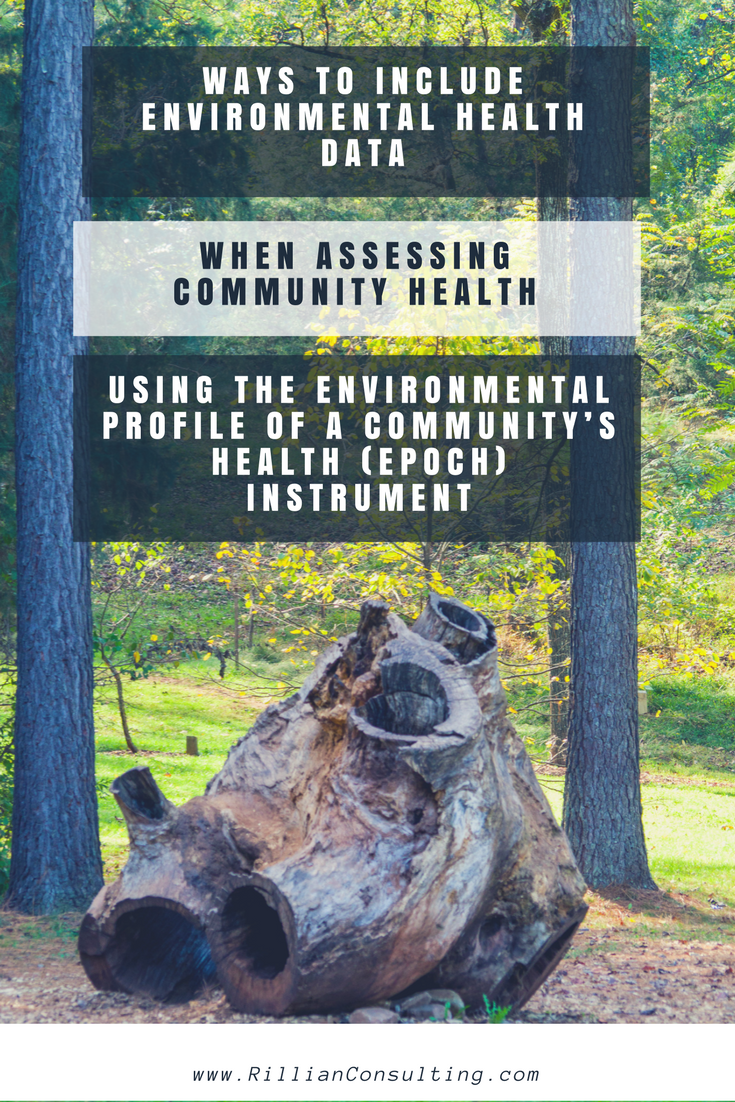
The Environmental Profile of a Community’s Health (EPOCH)
One way in which to conduct a study specific to the community is by using the Environmental Profile of a Community’s Health (EPOCH), a measurement tool designed for collecting data on environmental factors that are associated with cardiovascular disease (CVD) risk factors. EPOCH measures both objective factors as well as subjective perceptions of the environment of community members.(1) EPOCH has two parts, EPOCH 1 that assesses the physical environment and EPOCH 2 is an survey of participants’ perceptions of environmental factors in their communities (2). This instrument has been tested in both urban and rural communities (n = 84) in 5 different countries on different continents (Brazil, Canada, China, Columbia, and India) with a sample size of 2,360 individual respondents, or an average of 28 respondents per community surveyed, and found to be a reliable measure (reliability > 0.8) for all of the community-level measures.(1)
- Link to EPOCH 1 Survey Instrument. Source: Chow et al 2010. (2)
- Link to EPOCH 2 Survey Instrument. Source: Corsi et al 2012. (1)
EPOCH In Use in Recent Studies
The EPOCH instrument was used to collect data on these CVD risk factors in a large city in Southeast Asia (Karachi, Pakistan), an area in which there has not been a lot of research conducted on CVD environmental risk factors.(3)
- This study focused on two different middle to high income communities in Karachi with a study population of young adults 18-25 years old (n = 120).
- These communities were found to be exposed to CVD risk factors in their environment, such as a high proportion of tobacco shops and fast food restaurants compared to recreational parks and vendors or stores selling fresh fruits and/or vegetables, as well as perceive tobacco use by men as socially acceptable in their communities.
The EPOCH instrument was recently adapted for use with a photographic evaluation of the community built environment, and called the EPOCH Photo Neighbourhood Evaluation Tool (EP-NET). (4)
- This method was found to be a reliable and reproducible way (intra-class correlation for most (87%) of the survey items of > or = 0.70) to assess these specific built environment factors across a diverse, international range of communities. EP-NET involves a systematic method for taking and analyzing the photos.
- Link to EPOCH EP-NET Survey Instrument. Source: Source: Corsi et al 2014. (4)
- Link to EPOCH EP-NET Instruction Manual. Source: Source: Corsi et al 2014. (4)
Another study used EPOCH to specifically study one CVD environmental risk factor, tobacco advertising, across both urban (n = 235) and rural (n = 227) communities in 16 different countries with 11,842 individual study participants. (5).
- Lower-income countries were found to have higher levels of tobacco marketing than higher income countries.
- However, even in countries that had ratified the (FCTC), there were still high levels of tobacco marketing.
- Almost half (45%) of study participants reported seeing at least one type of tobacco ad, and 10% reported seeing at least 5 types of tobacco marketing in the 6 months prior to the survey.
- Urban communities were found to have higher intensities of tobacco marketing than rural communities.

Hollow log shaped like a heart outside in the environment at Kemper Park, Charlottesville, VA. Photo © Jillian Regan 2017
Conclusion
EPOCH is an instrument that can be useful for measuring environmental CVD risk factors when assessing the community’s health. It has been found to be reliable in both urban and rural communities as well as across a diverse range of countries at various levels of development.
Links to the PDFs of the EPOCH survey instruments:
- EPOCH 1 Survey Instrument. Source: Chow et al 2010. (2)
- EPOCH 2 Survey Instrument . Source: Corsi et al 2012. (1)
- EPOCH EP-NET Survey Instrument. Source: Corsi et al 2014. (4)
- EPOCH EP-NET Instruction Manual. Source: Corsi et al 2014. (4)
Sources:
- Corsi, DJ; Subramanian, SV; McKee, M; Swaminathan, S; Lopez-Jaramillo, P; Avezum, A; Lear, SA; Dagenais, G; Rangarajan, S; Teo, K; Yusuf, S; Chow, CK. (2012). Environmental Profile of a Community’s Health (EPOCH): an ecometric assessment of measures of the community environment based on individual perception. PLoS One;7(9):e44410. doi: 10.1371/journal.pone.0044410. Epub 2012 Sep 4.
- Chow, CK; Lock, K; Madhavan, M; Corsi DJ; Gilmore, AB; Subramanian, SV; Wei, L; Swaminathan, S; Lopez-Jaramillo, P; Avezum, A; Lear, S; Dagenais, G; Teo, K; McKee, M; and Yusuf, S. (2010). Environmental Profile of a Community’s Health (EPOCH): An Instrument to Measure Environmental Determinants of Cardiovascular Health in Five Countries. PLoS One. 2010; 5(12): e14294.Published online 2010 Dec 10. doi: 10.1371/journal.pone.0014294
- Hussain, MA; Noorani, S; Khan, A; Asad, H; Rehan, A; Kazi, A; Baig, MZ; Noor, A; Agil, A; Bham, NS; Khan, MA; Hassan, IN; and Kadir, MM. (2015). The Role of Neighborhood Environment in Promoting Risk Factors of Cardiovascular Disease among Young Adults: Data from Middle to High Income Population in an Asian Megacity. PLoS One. 2015 May 6;10(5):e0124827. doi: 10.1371/journal.pone.0124827. eCollection 2015.
- Chow, CK; Corsi, DJ; Lock, K; Madhavan, M; Mackie, P; Li, W; Yi, S; Wang, Y; Swaminathan, S; Lopez- Jaramillo, P; Gomez-Arbelaez; Avezum, A; Lear, SA; Dagenais, G; Teo, K; McKee, M; and Yusuf, S. (2014). A novel method to evaluate the community built environment using photographs–Environmental Profile of a Community Health (EPOCH) photo neighbourhood evaluation tool. PLoS One. 2014 Nov 4;9(11):e110042. doi: 10.1371/journal.pone.0110042. eCollection 2014.
- Savell, E; Gilmore, AB; Sims, M; Mony, PK; Koon, T; Yusoff, K; Lear, S; Seron, P; Ismail, N; Calik, KBT; Rosengren, A; Afridi, A; Rahman, O; Chifamba, J; zatonska, K; Mohan, V; Mohan, D; Lopez-Jaramillo; Avezum, A; Poirier, P; Orlandini, A; Wei, Li; McKee, M; Rangarajan, S; Yusuf, S; and Chow, C. (2015). The environmental profile of a community’s health: a cross-sectional study on tobacco marketing in 16 countries. Bulletin of the World Health Organization 2015;93:851-861G. doi: http://dx.doi.org/10.2471/BLT.15.155846